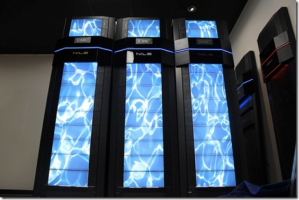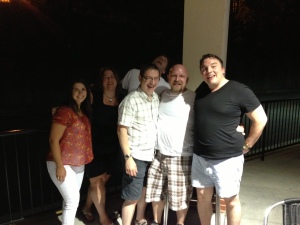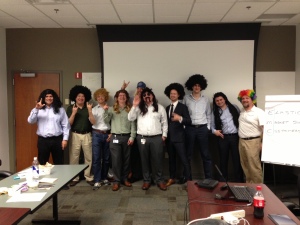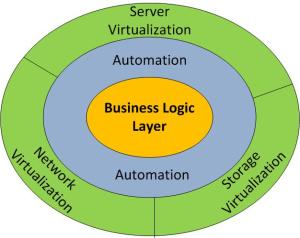Meeting with numerous customers, you see all spectrums of Infrastructure that customers cling to from the end of life hardware to the out of support software and hardware.
But the key is which of those customers understand they have these ancient bits of technology but are proactively moving away from them and then there are those that cling to them like comfort blankets.
The customer that uses their old technology like a comfort blanket is a technology guys worst nightmare in my opinion, because that old technology holds that customer back and causes issues long term. However, they do not see it that way they see the issue with companies selling them stuff and feel the responsibility is with vendors to make sure their technology works with the ancient hardware/software they use.
To a certain extent, technology companies should make sure their offerings work with older Hardware/Software but you have to draw the line somewhere especially when the older kit is from another vendor.
Whose responsibility is it the customer, legacy vendor or new vendor?
This is a tough question to answer because all 3 parties involved have different opinions on this.
Customer – It’s both vendors issue but most view the new vendor as the one who needs to make sure that anything they provide works with the legacy technology. At the end of the day the customer wants the easy option for them which may well be to hang onto that old technology as well as buy new.
Legacy Vendor – To a certain extent they will make sure that any new technology they provide works with the legacy part, but there does come a point where even they will struggle and have to say “No” to the customer. However, when a new vendor is involved then the legacy one washes their hands and its up to the new guy now.
New Vendor – This is the unlucky guy in all of this, as they are trying to sell new technology to a customer who has legacy, and sometimes that customer does not want to part with their comfort blanket of old “stuff”. The only choices open to the vendor at this point are either agree to support the old functioning with the new or walk away from a sale, or if they are very lucky persuade the customer into a migration plan away from the old technology.
Does cloud solve or make it more complicated?
If we go back to basics and look at what Cloud actually is:
Cloud computing is the next stage in the Internet’s evolution, providing the means through which everything — from computing power to computing infrastructure, applications, business processes to personal collaboration — can be delivered to you as a service wherever and whenever you need.
So why would Cloud solve the legacy issue, some providers claim that by moving to “Cloud” that customers don’t need to worry about the legacy issue because it doesn’t matter that you have old versions of software/hardware all of this can be accommodated in the “Cloud” where you don’t need to worry about it.
Some of the benefits of moving a section of business applications to the “Cloud” are taking advantage of Multi-Tenancy so that a business does not have to pay inflated hosting costs by having their own hardware dedicated to them. However if that business also has legacy hardware and software and applications that are coded to specific hardware and software then the cost saving from Multi-Tenancy is unable to be realised.
There have been a recent flurry of articles about hosting providers actually saying no to some customers with regards to legacy technology and applications, because the customer themselves didn’t really understand the application and so the risk to a hosting company is too great. Some say we can take the application but we cannot give you an SLA for that particular application.
Conclusions
Before even considering a full movement to the “Cloud” companies need to look at themselves from a IT Infrastructure perspective but also people and process and their data classification. It was once said the biggest obstacle to moving to the “Cloud” was Security, while that may still be one of the top reasons I also believe that companies legacy applications and hardware are also stopping them.
There are companies out there that offer migration services but then a business needs to truly understand the pain and length of the migration roadmap before diving into a program of work, which could take months if not longer. Coupled with hosting costs and everything else that may well make the ROI unattractive to many businesses.
If you have legacy applications but they can run on new hardware inside a virtualized container then the “Cloud” is an option for you. However, if that application is coded to specific legacy hardware also, then the “Cloud” could well be fraught with high costs and a migration roadmap that could make the whole “Cloud” prospect very unattractive to a business.
Therefore, its time for companies to really take a hard look at that legacy “stuff” and decide is our comfort blanket providing any real value to us or is it the blocker to gaining greater business agility!








